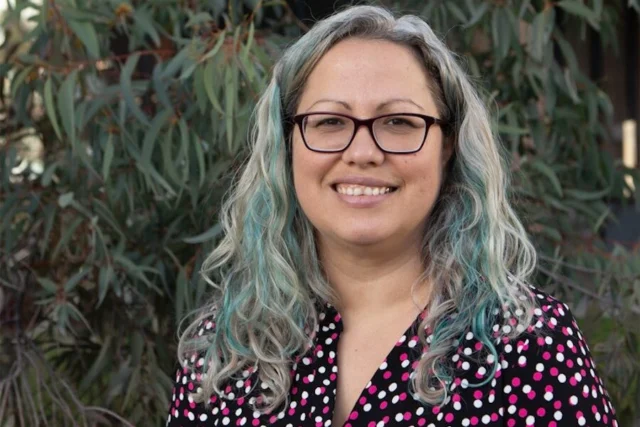
Sitting in front of a screen can affect the way we blink and cry which can in turn risk causing a debilitating and painful condition known as dry eye disease, reports KATE CATANZARITI.
EXCESSIVE screen time can affect our mental health, waistlines, social skills and sleep patterns, but it is also proving increasingly painful for Australian peepers.
Dry eye disease is one of the most common complaints of people seeking medical treatment for their eyes and experts say it is exacerbated by too much screen time.
It happens when the body fails to produce either enough tears, or the right kind of tears, to lubricate the eye surface and leads to blurred vision, burning, tearing, tired, red eyes and general discomfort.
It is becoming such a significant issue for Australians that the government has made the decision to subsidise the cost of a new treatment for chronic sufferers, by adding it to the Pharmaceutical Benefits Scheme (PBS).
Sydney executive assistant Tara says the change will ease the financial burden of coping with the disease which is unlike anything else she’s ever experienced.
“From the moment I wake up, to the end of the day, and throughout the night, my eyes feel like they’re burning and stinging with a gritty, sandy feeling that won’t go away,” the 39-year-old says.
“At its worst, I can get intense headaches, and it feels like a red, hot poker is going through my eyes.”
The disease is fuelled by too much screen time, eye experts say.
With Australians spending more than a third of their lives in front of a screen for work, education and social activities – equivalent to 143 days a year – the problem is becoming increasingly prevalent.
“Digital screen time affects blinking patterns, tear quality and volume… (It) is becoming more common, even in those without a history of eye conditions,” says leading ophthalmologist Prof Colin Chan, from Sydney’s Vision Eye Institute.
“(Screen time) may strongly influence both the incidence and effect of the disease in the coming years, noting young Australians use digital devices more than older age groups.”
Dry eye disease affects almost twice as many women than men, with the risk of it developing increasing with age.
People living with the disease frequently treat their symptoms with artificial tears, which do not always provide adequate relief.
However, this month, a new treatment for adults living with the most chronic and severe form of dry eye disease has been included as part of the PBS.
This news will go a long way to meeting a high, unmet clinical need, says Mark Koszek, optometrist and founding partner of EyeQ Optometrists.
“One in four ophthalmology patients report symptoms of dry eye disease,” says Dr Kozek.
“However, one in five people living with this disease are dissatisfied with their overall treatment, due to lack of symptom relief, the time taken to relieve symptoms, and treatment side-effects.
“Being able to access effective and affordable treatments that can improve overall quality of life is invaluable for those living with chronic severe dry eye disease.”
Who can be trusted?
In a world of spin and confusion, there’s never been a more important time to support independent journalism in Canberra.
If you trust our work online and want to enforce the power of independent voices, I invite you to make a small contribution.
Every dollar of support is invested back into our journalism to help keep citynews.com.au strong and free.
Thank you,
Ian Meikle, editor









Leave a Reply